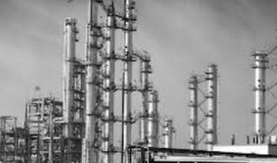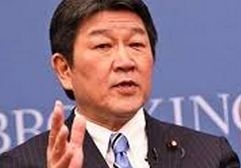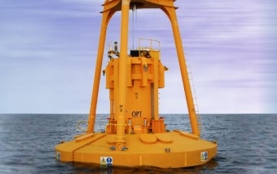News
Dubai-based oil firm to build “Energy City” in the Philippines
Project completion slated in five years’ time.
China completes construction of first coal-to-gas project
Plant will start supplying gas to Beijing by yearend.
UK firm plans 20 biomass plants in Vietnam
Plants will be will be fueled by rice husks.
Australia prepares to launch world’s largest wave energy converter
Will be the world’s first 1 MW device.
Conergy takes 22 MW Philippine solar power contract
Solar farm will be located in Negros Occidental province. German solar firm Conergy AG has won a contract from San Carlos Solar Energy to build a 22 MW solar power plant in San Carlos City, Negros Occidental in the Visayas region south of Manila.
Reliance becomes India’s leading energy company
Displaces state-owned ONGC in global rankings. Reliance Industries, Ltd improved eight positions to grab the 19th position on Platts Top 250 Global Energy Company Rankings for 2013. Oil and Natural Gas Corporation (ONGC) retained its 22nd place ranking, the position it had in 2012. RIL improved from 27th place.
India’s RE capacity hits 27.3 GW
Solar accounts for over 2 GW. India’s renewable energy capacity grew from 3.9 GW in 2003 to 27.3 GW by January 2013. Solar power in India comprises 2 GW of India’s electricity generation capacity. Reaching the 2 GW milestone means India can provide enough energy for some 278,000 homes.
South Korean industry braces for more expensive electricity
Higher charges could come in November.
Philippines upgrading transmission system on Luzon island
Five-year project will cost US$1.25 billion. The National Grid Corporation of the Philippines will start by improving the transmission facilities of the 75 MW Ambuklao hydroelectric dam built in 1950 and the 132 MW Binga hydroelectric dam built in 1956. NGCP said the transmission development plan plans to increase the amount of electricity distributed by the Luzon grid from 7,969 MW in 2011 to 11,165 MW in 2021. Metro Manila consumes 74% or 8,305 MW of the 11,165 MW of electricity channeled daily through the Luzon grid. The plan intends to modernize the high-power voltage lines of the Ambuklao and Binga dams and the transmission lines connecting Binga to San Manuel, Pangasinan, and to La Trinidad, Benguet.
Japan plans orbiting solar energy stations
Energy will be “beamed down” to terrestrial stations.
Air Liquide Japan, Toyota Tsusho partner in hydrogen supply business
Will supply fuel cell electric vehicles in Japan. Both companies have formed a joint venture, Toyota Tsusho Air Liquide Hydrogen Energy Corporation, with headquarters in Nagoya. The JV will build two hydrogen refueling stations (HRS) in the Aichi area (Atsuta in Nagoya and Fukada in Toyota City) to supply hydrogen for future fuel cell electric vehicles.The HRS will be operational in 2014. Fuel cell vehicles are expected to reach the Japanese consumer market in 2015.Japan intends to build 100 HRS in and alongside highways connecting Tokyo, Nagoya, Osaka and Fukuoka by 2015.Air Liquide Group has developed technology across the entire hydrogen supply chain from production and storage to distribution and use by the end consumer. It has built 60 HRS for fuel cell vehicles around the world.Toyota Tsusho is a major affiliate of Toyota Group focusing on its energy-related business.
Japan to reveal future energy mix in three years
Energy mix will retain nuclear energy.
Itochu to market cheaper battery backup system for buildings
System uses Samsung SDI Company's lithium ion batteries.
Malaysia reports surge in renewable energy projects
Ignited by implementation of Feed-in Tariff in 2011.
Mitsui pushes ahead with wave power technology
Partners with Ocean Power Technologies Inc.
Indonesia begins moves to amend Geothermal Law
Revision to optimize the utilization of geothermal energy. The Ministry of Energy and Mineral Resources has filed a draft bill at the Indonesian parliament to revise Law No. 27 of 2003 on Geothermal Energy. Commission VII at the House of Representatives has formed a Special Committee to further discuss the draft bill. Jero Wacik, Minister of Energy and Mineral Resources, said that as a renewable energy source, geothermal energy has great potential to contribute to electricity distribution in Indonesia. Indonesia has up to 40% of the world’s potential geothermal energy resources capable of producing 30,000 MW of electricity annually. Despite its great potential, the development of geothermal energy is currently being held back by cross-ministry regulations. This is a consequence of geothermal energy production being considered a mining activity. This has caused problems for exploiting geothermal hotspots in forest areas that requires permits from the Ministry of Forestry and Ministry of Environmental Affairs.


















 Advertise
Advertise


















